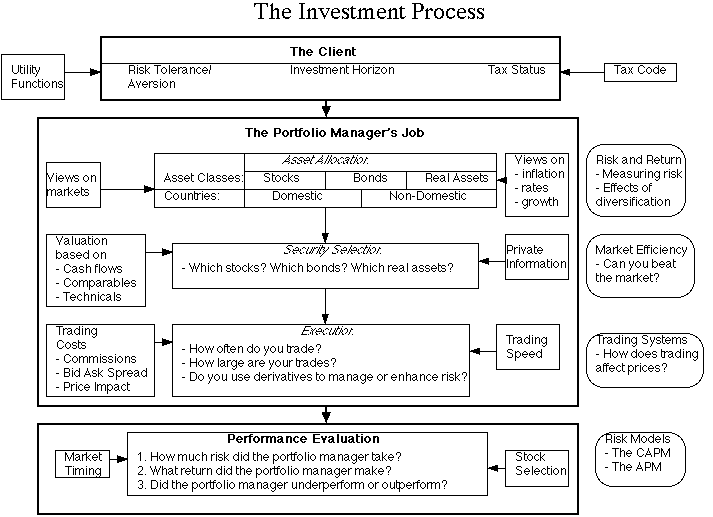One of the most striking features of the empiricial evidence accumulated on the efficiency of financial markets is the disconnect between studies looking at whether individual strategies beat the market and whether portfolio managers, who often adopt these same strategies, beat the market. While there seem to be dozens of individual strategies that show promise in terms of beating the market, very few portfolio managers actually accomplish the same objective. One very important reason is the failure on the part of most studies to factor in both the difficulties and the costs associated with executing strategies.
There are three dimensions to portfolio execution. The first is the cost of execution, and this is far more than the brokerage costs that are incurred when trades are made. There are, in fact, three more components to the cost. The first is the bid-ask spread, which leads investors to buy at a high price and sell at a lower price. For low-priced stocks, this cost can dwarf the brokerage costs and can be as high as 20% of the price of the stock. The second is the price impact that investors have when they trade, pushing the price up as they buy and down as they sell. In illiquid markets, this cost can be substantial especially for large trades. The final component is the tax impact associated with trading, which becomes a factor when we consider the objective in portfolio management is maximizing after-tax returns. When considered in aggregate, the trading costs will be high for both small investors (who often face a larger spread and brokerage costs than large investors) and large investors (who have a much greater price impact when they trade). The trading costs will vary widely across different investment strategies, depending upon the trading frequency and urgency associated with each strategy.
The second dimension to portfolio execution is trading speed. Generally speaking, the need to trade fast and the desire to keep transactions costs low will come into conflict. Investors who are willing to accept trades spread out over longer periods will generally be able to have much lower trading costs than investors who need to trade quickly. Relating back to the investment strategies developed in the last section, long term value investors will be less affected by trading costs than short term investors trading on information.
The final dimension to portfolio execution is the ongoing management of the risk in the portfolio. Portfolio risk characteristics do change over time, as do client objectives, and it is the portfolio manager’s job to keep the portfolio is synch at minimum costs. The expansion of the derivatives markets provide portfolio managers with additional tools that can be used to hedge risk and add to returns over time.

